
William Erwin Eisner was an American cartoonist, writer, and entrepreneur. He was one of the earliest cartoonists to work in the American comic book industry, and his series The Spirit (1940–1952) was noted for its experiments in content and form. In 1978, he popularized the term "graphic novel" with the publication of his book A Contract with God. He was an early contributor to formal comics studies with his book Comics and Sequential Art (1985). The Eisner Award was named in his honor and is given to recognize achievements each year in the comics medium; he was one of the three inaugural inductees to the Will Eisner Comic Book Hall of Fame.
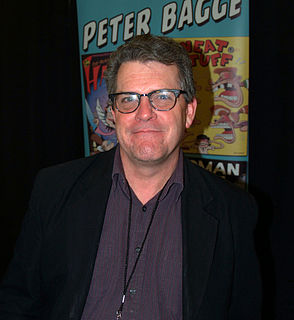
Peter Bagge is an American cartoonist whose best-known work includes the comics Hate and Neat Stuff. His stories often use black humor and exaggerated cartooning to dramatize the reduced expectations of middle-class American youth. He won two Harvey Awards in 1991, one for best cartoonist and one for his work on Hate. In recent decades Bagge has done more fact-based comics, everything from biographies to history to comics journalism. Publishers of Bagge's articles, illustrations, and comics include suck.com, MAD Magazine, toonlet, Discover, and the Weekly World News, with the comic strip Adventures of Batboy. He has expressed his libertarian views in features for Reason.
Jim is a comic book series by Jim Woodring. It began in 1980 as a self-published zine and was picked up by Fantagraphics Books in 1986 after cartoonist Gil Kane introduced Woodring to Fantagraphics co-owner Gary Groth. The publisher released four magazine-sized black-and-white issues starting in September 1987. A comic book-sized continuation, Jim Volume II, with some color, began in 1993 and ran for six issues until 1996.
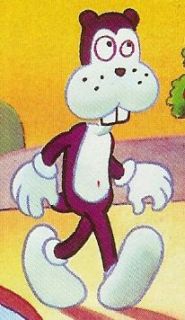
Frank is a cartoon character created by American cartoonist Jim Woodring. Frank is a bipedal, bucktoothed animal of uncertain species whom Woodring described as a "generic anthropomorph". The stories and supporting characters appear in a world called the Unifactor.
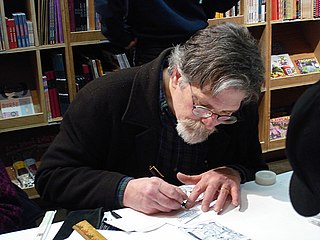
James William Woodring is an American cartoonist, fine artist, writer and toy designer. He is best known for the dream-based comics he published in his magazine Jim, and as the creator of the anthropomorphic cartoon character Frank, who has appeared in a number of short comics and graphic novels.

Vincent Patrick Deighan, better known by the pen name Frank Quitely, is a Scottish comic book artist. He is best known for his frequent collaborations with Grant Morrison on titles such as New X-Men, We3, All-Star Superman, and Batman and Robin, as well as his work with Mark Millar on The Authority and Jupiter's Legacy.
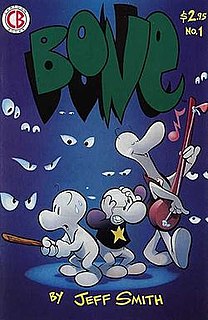
Bone is an American independently-published graphic novel series, written and illustrated by Jeff Smith, originally serialized in 55 irregularly released issues from 1991 to 2004. The series was published every other month with some delays from June 1991 to June 2004. The series was self-published by Smith's Cartoon Books for issues #1-20, by Image Comics from issues #21-27, and back to Cartoon Books for issues #28-55.
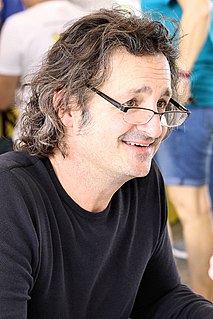
Jeff Smith is an American cartoonist. He is best known as the creator of the self-published comic book series Bone.

John Arne Sæterøy, better known by the pen name Jason, is a Norwegian cartoonist, known for his sparse drawing style and silent, anthropomorphic animal characters.
Steve Oliff is an American comic book artist who has worked as a colorist in the comics industry since 1978.

John F. Ryan IV is an American alternative comics creator, writer, and animator. He created Angry Youth Comix, a comic book published by Fantagraphics, and "Blecky Yuckerella", a comic strip which originated in the alternative newspaper the Portland Mercury and now appears on Ryan's website. He also created Pig Goat Banana Cricket, a TV show made jointly with Dave Cooper that Nickelodeon picked up. He was the story editor for Looney Tunes Cartoons. In a throwback to the days of underground comix, Ryan's oeuvre is generally an attempt to be as shocking and politically incorrect as possible.

Michael Terry Gilbert is an American comic book artist and writer who has worked for both mainstream and underground comic book companies.
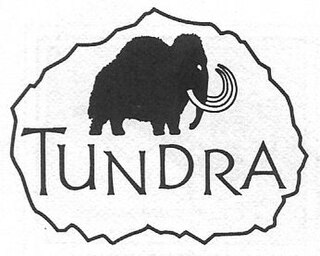
Tundra Publishing was a Northampton, Massachusetts-based comic book publisher founded by Kevin Eastman in 1990. The company was founded to provide a venue for adventurous, creator-owned work by talented cartoonists and illustrators. Its publications were noted in the trade for their high production values, including glossy paper stock, full-color printing, and square binding. Tundra was one of the earlier creator-owned companies, before the formation of Image Comics and Dark Horse Comics' Legends imprint.
William Carl Schelly was an Eisner Award-winning author who chronicled the history of comic books and comic book fandom, and wrote biographies of comic book creators, including Otto Binder, L.B. Cole, Joe Kubert, Harvey Kurtzman, John Stanley, and James Warren as well as silent film comedian Harry Langdon.

Tantalizing Stories was a comic book series by Mark Martin and Jim Woodring published by Tundra Publishing. The contents of each black and white issue were divided between the two cartoonists and featured a variety of comic short stories, illustrations and text pieces. The series was the original venue for most of Woodring's early stories featuring his character Frank, which were later collected into several books. It also printed stories of Martin's recurring character Montgomery Wart. Although the series was ostensibly aimed at children, it developed a readership among fans of alternative comics.
Brian Fies is an American cartoonist. He is the creator of Mom's Cancer, which was the first webcomic to receive an Eisner Award. Fies won the Eisner in 2005 under the newly created category "Best Digital Comic". Mom's Cancer also won Fies a Harvey Award, in the Best New Talent category, as well as the Lulu Blooker Prize in its Comics category. The German edition of the graphic novel received the Deutscher Jugendliteraturpreis in the Non-Fiction category. Mom's Cancer was also nominated for a Quill Award and two further Eisner Awards.
Mark Wheatley is an American illustrator, writer, editor, and publisher in the comic book field. Wheatley's comic book and pulp creations include Breathtaker, Mars, and Blood of the Innocent, all illustrated with his frequent collaborator Marc Hempel. Wheatley has written books, comic books, and television shows, and his illustrations have appeared in magazines, books, comic books, and games.

Weathercraft is a 2010 graphic novel by American cartoonist Jim Woodring, featuring his best-known characters Frank, Manhog and Whim. While Frank stars in most of Woodring's stories set in the fictional universe of the Unifactor, this book stars Manhog, with Frank making only a brief appearance. Manhog, after trials and tribulations, sets out on a transformative journey, returning to face off against the devilish Whim, who has enslaved and transformed his friends. Like all other stories set in the Unifactor, Weathercraft unfolds entirely in pictures, with no dialogue balloons or captions. Weathercraft was Woodring's first book-length work.

Congress of the Animals is a graphic novel by American artist Jim Woodring published on June 8, 2011. The book is Woodring's second book-length comic set in his fictional world, the Unifactor, and the first to star his most famous character, Frank.

Chris Samnee is an American comic book artist. He received the 2011 Harvey Award for Most Promising Newcomer for his work on the Thor: The Mighty Avenger, and won a 2013 Eisner Award for Best Penciller/Inker for his work on The Rocketeer: Cargo of Doom and Daredevil. He was also nominated for the 2006 Russ Manning Most Promising Newcomer Award. In 2020 he co-created the Image Comics series Fire Power alongside writer Robert Kirkman.















